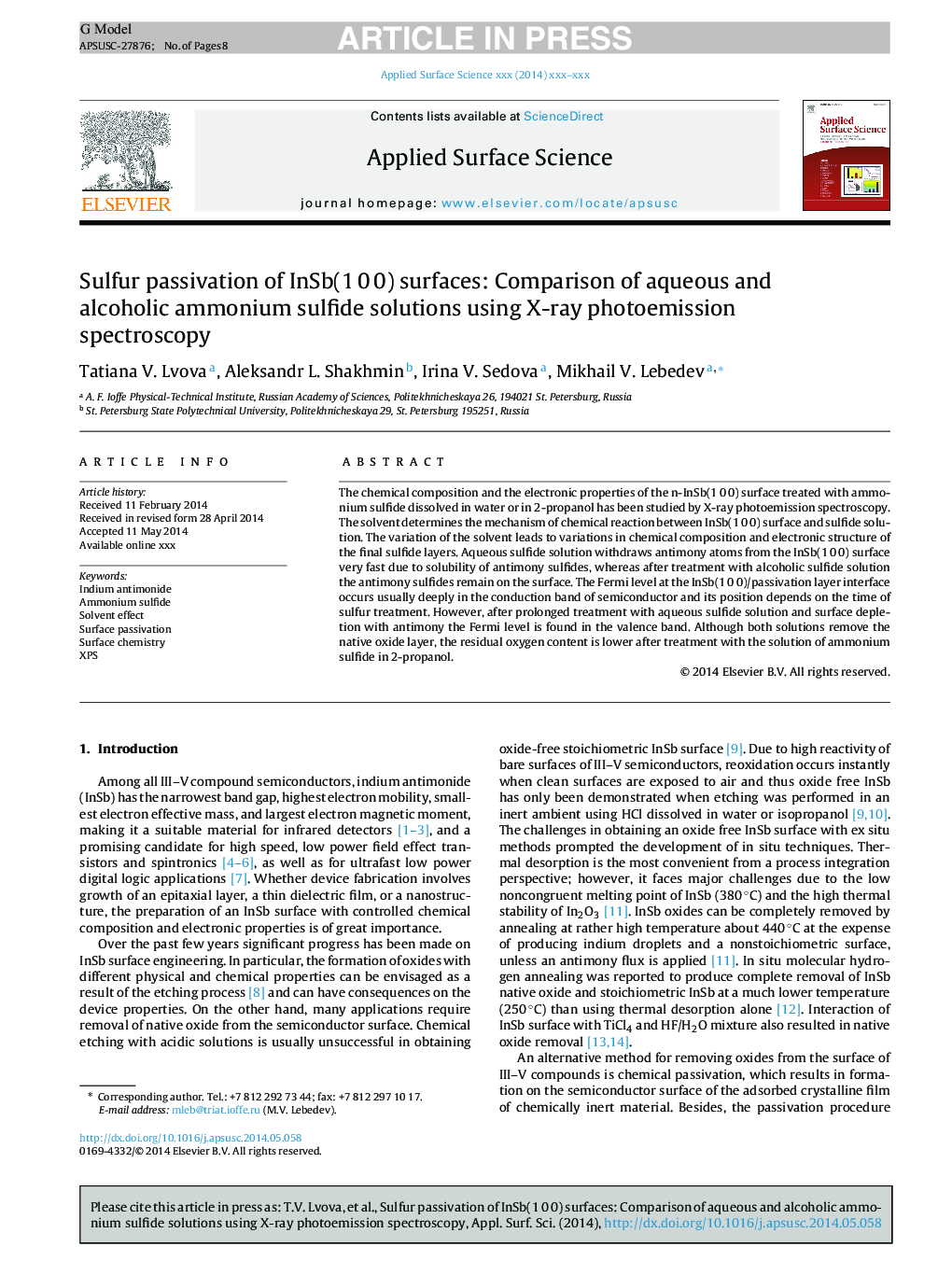| Article ID | Journal | Published Year | Pages | File Type |
|---|---|---|---|---|
| 5361352 | Applied Surface Science | 2014 | 8 Pages |
Abstract
The chemical composition and the electronic properties of the n-InSb(1Â 0Â 0) surface treated with ammonium sulfide dissolved in water or in 2-propanol has been studied by X-ray photoemission spectroscopy. The solvent determines the mechanism of chemical reaction between InSb(1Â 0Â 0) surface and sulfide solution. The variation of the solvent leads to variations in chemical composition and electronic structure of the final sulfide layers. Aqueous sulfide solution withdraws antimony atoms from the InSb(1Â 0Â 0) surface very fast due to solubility of antimony sulfides, whereas after treatment with alcoholic sulfide solution the antimony sulfides remain on the surface. The Fermi level at the InSb(1Â 0Â 0)/passivation layer interface occurs usually deeply in the conduction band of semiconductor and its position depends on the time of sulfur treatment. However, after prolonged treatment with aqueous sulfide solution and surface depletion with antimony the Fermi level is found in the valence band. Although both solutions remove the native oxide layer, the residual oxygen content is lower after treatment with the solution of ammonium sulfide in 2-propanol.
Related Topics
Physical Sciences and Engineering
Chemistry
Physical and Theoretical Chemistry
Authors
Tatiana V. Lvova, Aleksandr L. Shakhmin, Irina V. Sedova, Mikhail V. Lebedev,
